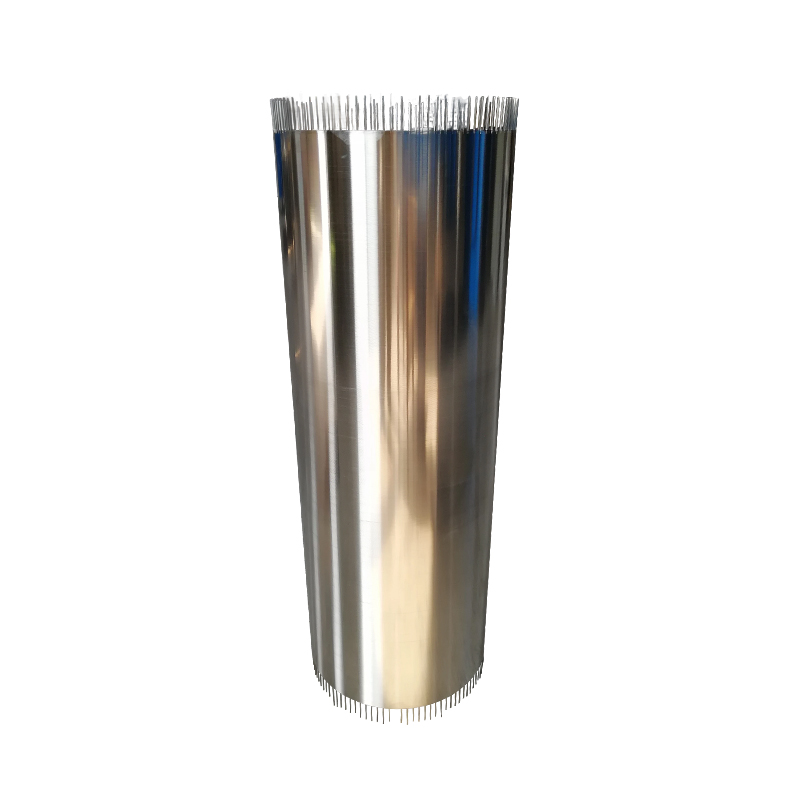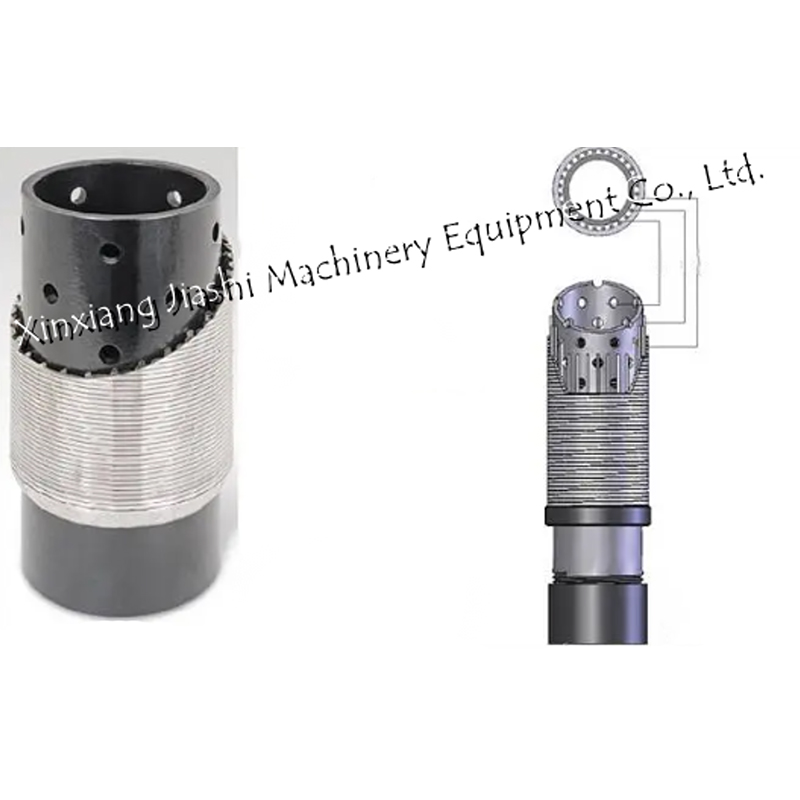How do surface treatment technologies enhance corrosion resistance and extend the service life of oil casing in sour gas fields?
Release Time : 2025-09-25
During oil and gas extraction, oil casing is buried deep underground, directly exposed to high-temperature, high-pressure oil and gas mixtures, particularly in sour gas fields containing hydrogen sulfide, carbon dioxide, and formation water. The metal casing is highly susceptible to electrochemical corrosion, stress corrosion cracking, and hydrogen embrittlement. This corrosion not only weakens the wall thickness and reduces pressure-bearing capacity, but also potentially leads to leaks and well blowouts. To address this challenge, surface treatment technologies are crucial for improving the corrosion resistance of oil casing. By creating a multi-layered protective system through physical barriers, chemical passivation, and material modification, these technologies significantly extend the service life of the casing in harsh environments.
Corrosion of oil casing begins at the surface. Untreated steel exposed to acidic media reacts with hydrogen sulfide or carbon dioxide, forming corrosion products that continuously flake off, leading to gradual thinning of the wall. The core objective of surface treatment is to create a stable, dense barrier between the metal and the corrosive medium, preventing or delaying chemical reactions. This protection is not a single coating, but rather a combination of targeted technologies tailored to the specific internal and external environments, achieving comprehensive protection.
Internal surface treatment primarily addresses the direct erosion and chemical attack of the oil and gas flow. In high-sulfur gas fields, the inner wall is often lined with materials such as epoxy resin, polyurethane, or metal alloy coatings. These materials have excellent chemical inertness, effectively blocking the permeation of hydrogen sulfide, carbon dioxide, and water. The coating adheres tightly to the inner wall, forming a smooth, continuous protective film that not only prevents corrosion but also reduces flow resistance, improving transport efficiency. In some high-end applications, chromium plating or nickel-alloy spraying further enhances corrosion and wear resistance, maintaining integrity even under high-velocity gas flow.
External surface treatment focuses on combating corrosion from cement slurry, formation water, and soil in the wellbore environment. During well cementing, the alkaline nature of the cement slurry can cause alkali corrosion to ordinary steel, while chloride ions and sulfates in the formation can induce pitting and crevice corrosion. Therefore, the outer wall is typically treated with a corrosion-resistant coating, such as fused epoxy powder (FBE), three-layer polyethylene (3LPE), or three-layer polypropylene (3LPP). These coatings not only have strong adhesion but also resist mechanical damage and cathodic delamination, maintaining their integrity during well installation, cementing, and long-term burial. In some extreme environments, cathodic protection technology is used in conjunction with these coatings, employing external current or sacrificial anodes to further suppress electrochemical corrosion.
Welded areas are a key focus and challenge in corrosion protection. The weld seam and its heat-affected zone in straight-seam welded pipes, due to changes in microstructure, often become starting points for corrosion. To eliminate this weakness, modern manufacturing processes employ post-weld heat treatment to homogenize the microstructure and reduce residual stress. Simultaneously, the surface treatment of the weld area matches that of the base material, ensuring a continuous, defect-free coating. Some high-corrosion-resistant oil casings also utilize internal weld grinding technology, making the inner surface of the weld flush with the pipe wall to prevent turbulence or localized corrosion caused by protrusions.
Furthermore, surface treatment considers compatibility with connection points. Threaded connections are critical for oil casing, requiring both sealing and prevention of crevice corrosion. The coating on the threaded area must have good abrasion resistance and elasticity to withstand the connection process without damage. The selection of sealant grease is also coordinated with the surface treatment to enhance overall corrosion protection.
Ultimately, the value of surface treatment technology lies in transforming oil casing from a passive component to an active defense system. It avoids simply increasing the pipe wall thickness and instead, through scientific material engineering, builds a robust defense at the microscopic level. When every oil casing can operate stably in acidic gas fields for extended periods, avoiding frequent replacements and unplanned well shutdowns, this is not only a triumph of material technology but also a significant contribution to energy security and production efficiency. This hidden wisdom in metal protection is the core support for the modern oil and gas industry in tackling extreme environments.
Corrosion of oil casing begins at the surface. Untreated steel exposed to acidic media reacts with hydrogen sulfide or carbon dioxide, forming corrosion products that continuously flake off, leading to gradual thinning of the wall. The core objective of surface treatment is to create a stable, dense barrier between the metal and the corrosive medium, preventing or delaying chemical reactions. This protection is not a single coating, but rather a combination of targeted technologies tailored to the specific internal and external environments, achieving comprehensive protection.
Internal surface treatment primarily addresses the direct erosion and chemical attack of the oil and gas flow. In high-sulfur gas fields, the inner wall is often lined with materials such as epoxy resin, polyurethane, or metal alloy coatings. These materials have excellent chemical inertness, effectively blocking the permeation of hydrogen sulfide, carbon dioxide, and water. The coating adheres tightly to the inner wall, forming a smooth, continuous protective film that not only prevents corrosion but also reduces flow resistance, improving transport efficiency. In some high-end applications, chromium plating or nickel-alloy spraying further enhances corrosion and wear resistance, maintaining integrity even under high-velocity gas flow.
External surface treatment focuses on combating corrosion from cement slurry, formation water, and soil in the wellbore environment. During well cementing, the alkaline nature of the cement slurry can cause alkali corrosion to ordinary steel, while chloride ions and sulfates in the formation can induce pitting and crevice corrosion. Therefore, the outer wall is typically treated with a corrosion-resistant coating, such as fused epoxy powder (FBE), three-layer polyethylene (3LPE), or three-layer polypropylene (3LPP). These coatings not only have strong adhesion but also resist mechanical damage and cathodic delamination, maintaining their integrity during well installation, cementing, and long-term burial. In some extreme environments, cathodic protection technology is used in conjunction with these coatings, employing external current or sacrificial anodes to further suppress electrochemical corrosion.
Welded areas are a key focus and challenge in corrosion protection. The weld seam and its heat-affected zone in straight-seam welded pipes, due to changes in microstructure, often become starting points for corrosion. To eliminate this weakness, modern manufacturing processes employ post-weld heat treatment to homogenize the microstructure and reduce residual stress. Simultaneously, the surface treatment of the weld area matches that of the base material, ensuring a continuous, defect-free coating. Some high-corrosion-resistant oil casings also utilize internal weld grinding technology, making the inner surface of the weld flush with the pipe wall to prevent turbulence or localized corrosion caused by protrusions.
Furthermore, surface treatment considers compatibility with connection points. Threaded connections are critical for oil casing, requiring both sealing and prevention of crevice corrosion. The coating on the threaded area must have good abrasion resistance and elasticity to withstand the connection process without damage. The selection of sealant grease is also coordinated with the surface treatment to enhance overall corrosion protection.
Ultimately, the value of surface treatment technology lies in transforming oil casing from a passive component to an active defense system. It avoids simply increasing the pipe wall thickness and instead, through scientific material engineering, builds a robust defense at the microscopic level. When every oil casing can operate stably in acidic gas fields for extended periods, avoiding frequent replacements and unplanned well shutdowns, this is not only a triumph of material technology but also a significant contribution to energy security and production efficiency. This hidden wisdom in metal protection is the core support for the modern oil and gas industry in tackling extreme environments.







